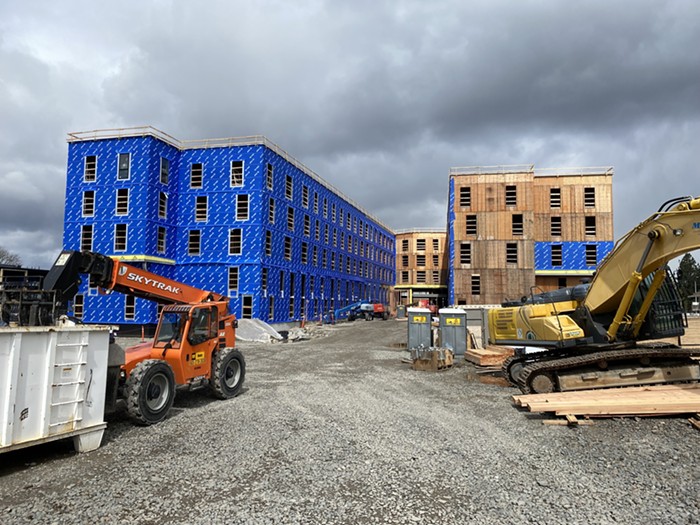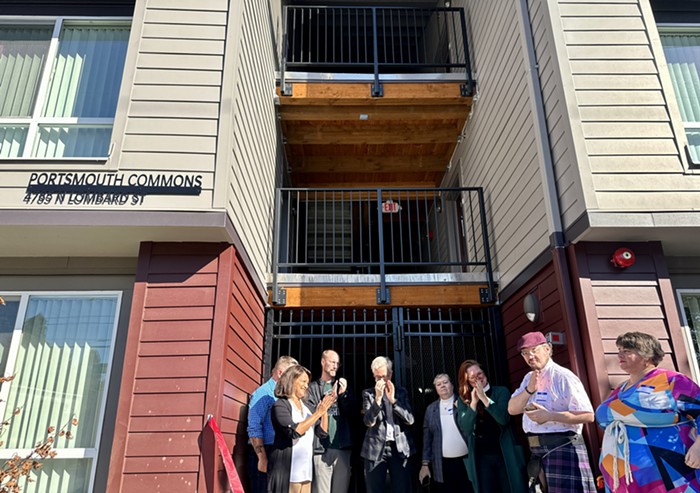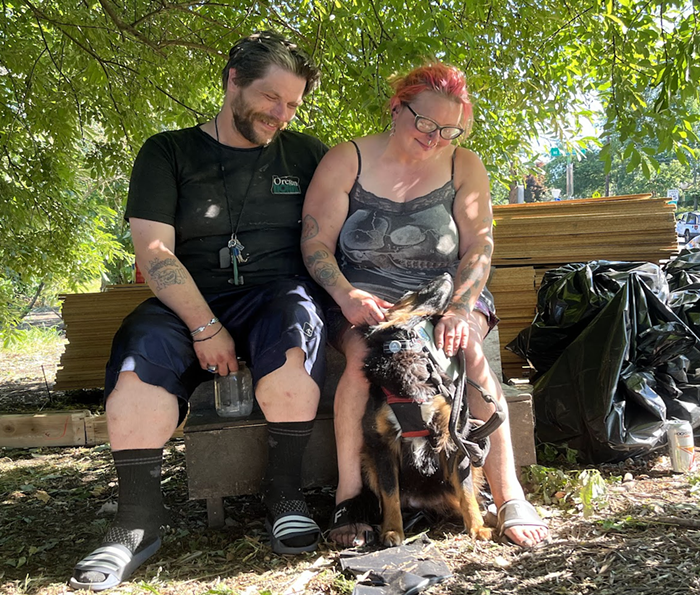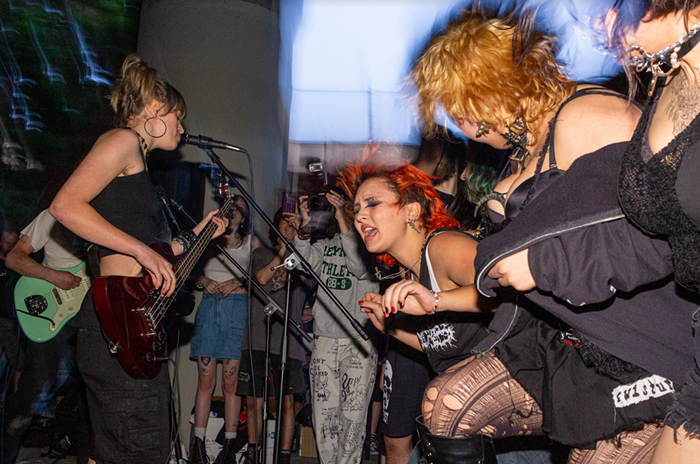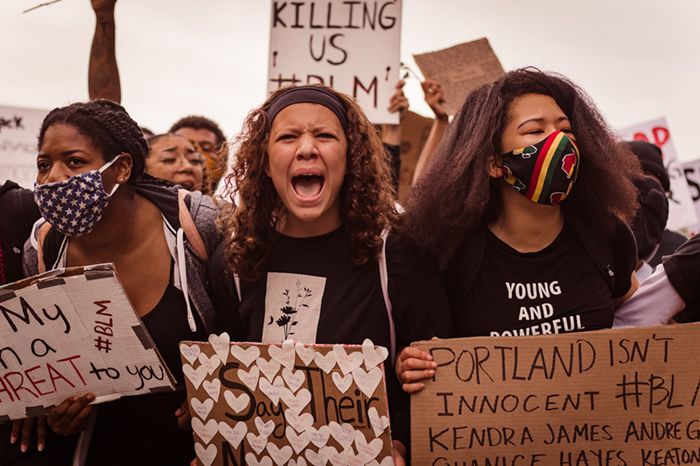
City officials Thursday revealed the first three locations for the city's six planned "safe rest villages," or sanctioned outdoor shelters for unhoused Portlanders. The much-anticipated announcement comes months after the idea was first pitched by City Commissioner Dan Ryan as a way to address what he refers to as a "humanitarian crisis on our streets."
"We need to meet our houseless neighbors where they are and provide the shelter and services they deserve," Ryan said at a Thursday press conference announcing the first locations.
The future village locations are dispersed across the city. One is an empty lot, currently owned by both the city and Oregon Department of Transportation (ODOT), that sits alongside SW Naito, just north of where Naito crosses I-405. Another is a city-owned lot tucked between Errol Heights Park and a Franz Bakery Outlet along SE 45th Ave, a few blocks north of the Springwater Corridor. The third is a large paved lot, currently a TriMet property operating as Menlo Park-and-Ride, at the corner of E Burnside and 122nd Ave. All three locations, along with the locations of other city-supported outdoor villages—are identified on this map.
All three properties are in close proximity to public transit stops and social service programs. City staff said they also selected areas near large, unsanctioned homeless camps that have been documented by members of the public. Ryan said that helping people move out of those camps and into sanctioned, organized villages should come as good news to neighbors who regularly raise concerns about Portland's unhoused population.
"These are fenced, fully-staffed, managed outdoor shelters—not tent camps," Ryan, who serves as the council liaison to homeless services, said. "This will provide people with a place to sleep, to receive basic hygiene, and to access to support services."
Ryan said these locations will be able serve an average of 60 people each. The villages will be comprised of "sleeping pods" and rely on retrofitted shipping containers to serve as laundry rooms, showers, bathrooms, and kitchen facilities.
According to Ryan, people will only be able to access one of these villages through a referral from an homeless outreach worker or other social service provider who interacts with people living in unsanctioned encampments.
The six villages will be funded by $16 million in federal funds distributed to Portland through the American Rescue Plan Act earlier this year. Those funds are only available through December 31, 2024. Ryan said that the city has only committed to these villages existing for three years—or, until the federal funds dry up.
These six villages will join an already growing network of outdoor village-style shelters in Portland, including Dignity Village, Hazelnut Grove, and Right 2 Dream Too. After the COVID-19 pandemic arrived in Oregon, the city set up three temporary emergency outdoor shelters, formed under the name Creating Conscious Communities with People Outside (or, C3PO), for unhoused Portlanders on city lots. The C3PO villages are also made up of weatherproof sleeping pods. Two of the three C3PO villages have since relocated to more permanent locations, and are overseen by the Joint Office of Homeless Services (JOHS), the department shared by the city and Multnomah County.
JOHS is also in the process of opening five additional outdoor shelters run by social service providers, similar to St. Johns Village, which is owed by JOHS but operated by a nonprofit called Do Good Multnomah. Those additional shelters will be backed by $3 million in dollars collected through Metro's supportive housing services measure, an income tax approved by voters in May 2020. The program collected its first round of taxes this year.
The city's safe rest village program is still in its infancy. Ryan said Thursday that, while he hopes to have the first three villages up and running by the start of the new year, it could take longer. The properties still need to be connected to sewer and water lines, have service providers signed on to operate them, and undergo construction before they can begin operation.
In July, the city released a list of 71 city-owned properties that could possibly host one of these villages. None of the three sites announced today were included in that initial list.
It's not clear when Ryan's office will announce the locations of three additional villages.
"We’re moving fast," said Ryan. "We have a humanitarian crisis in our city. We need to treat it with the urgency it deserves."

